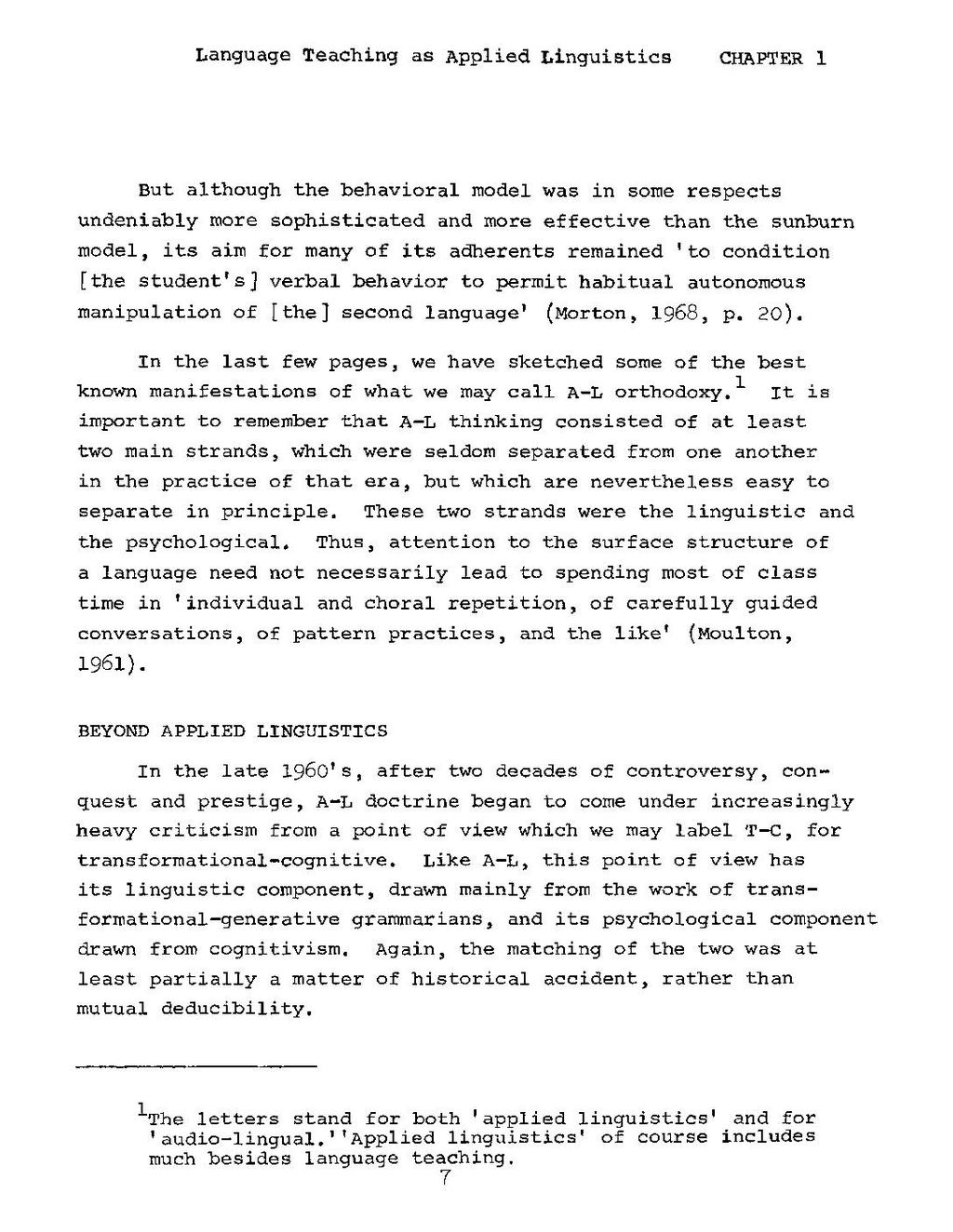But although the behavioral model was in some respects undeniably more sophisticated and more effective than the sunburn model, its aim for many of its adherents remained 'to condition [the student's] verbal behavior to permit habitual autonomous manipulation of [the] second language' (Morton, 1968, p. 20).
In the last few pages, we have sketched some of the best known manifestations of what we may call A-L orthodoxy.[1] It is important to remember that A-L thinking consisted of at least two main strands, which were seldom separated from one another in the practice of that era, but which are nevertheless easy to separate in principle. These two strands were the linguistic and the psychological. Thus, attention to the surface structure of a language need not necessarily lead to spending most of class time in 'individual and choral repetition, of carefully guided conversations, of pattern practices, and the like' (Moulton, 1961).
BEYOND APPLIED LINGUISTICS
In the late 1960's, after two decades of controversy, conquest and prestige, A-L doctrine began to come under increasingly heavy criticism from a point of view which we may label T-C, for transformational-cognitive. Like A-L, this point of view has its linguistic component, drawn mainly from the work of transformational-generative grammarians, and its psychological component drawn from cognitivism. Again, the matching of the two was at least partially a matter of historical accident, rather than mutual deducibility.
- ↑ The letters stand for both 'applied linguistics' and for 'audio-lingual.' 'Applied linguistics' of course includes much besides language teaching.
7
